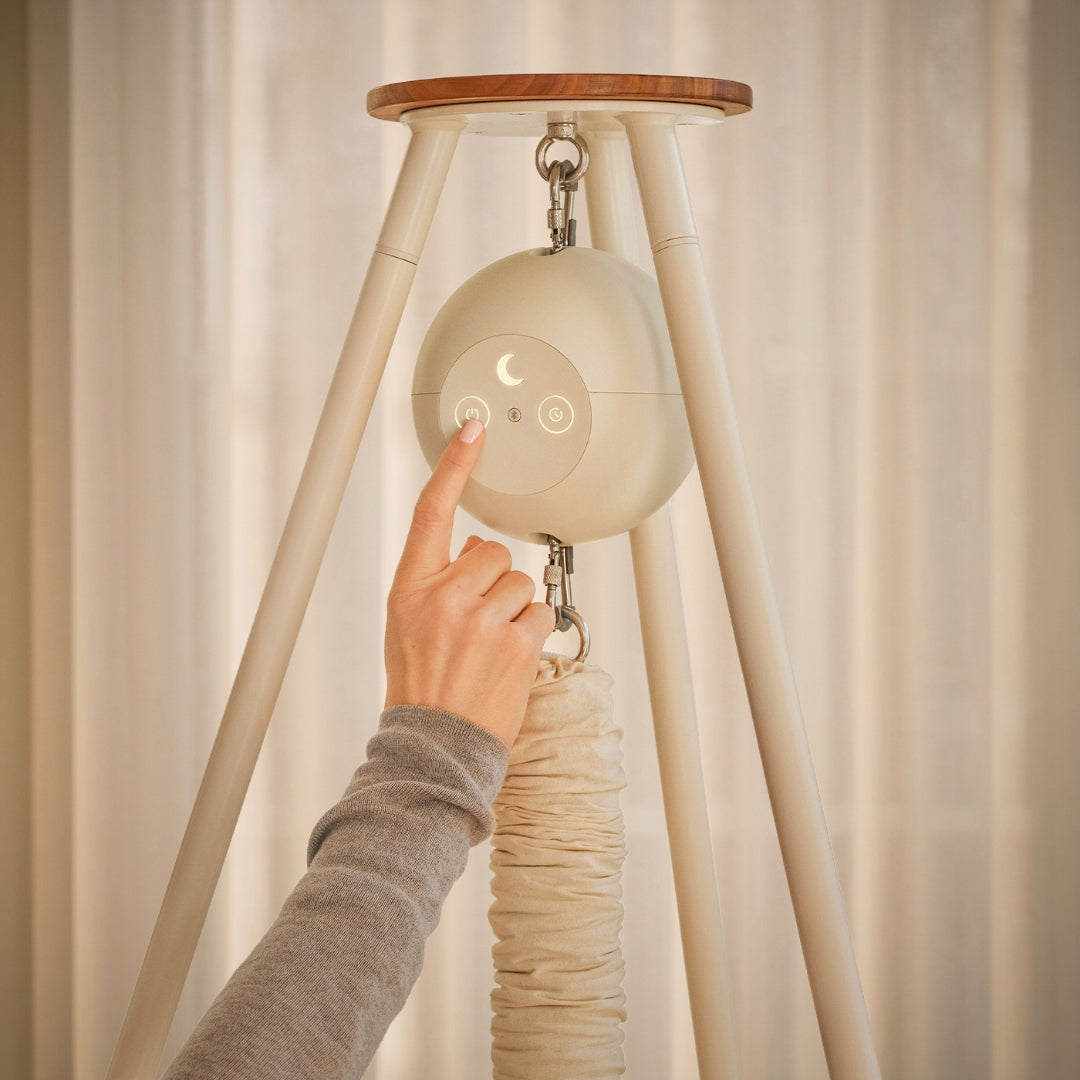


Morning sickness refers to the nausea and vomiting that occur during pregnancy, especially in the first trimester. It affects about 7 out of 10 pregnant people and is believed to be linked to the rapid hormonal changes taking place in the body. Although unpleasant, it’s usually a normal part of pregnancy.
Still, it is one of the most common, and perhaps, dreaded, early pregnancy symptoms. Mainly because despite the name, it doesn’t just happen in the morning. For many, nausea and vomiting can strike at any time of day or night, making it a constant challenge to manage.
When does morning sickness start and how long does it last?
You can expect morning sickness to begin fairly early in your pregnancy, typically sometime between week 4 and week 7. Some people even start feeling it before they’ve taken a pregnancy test. Symptoms often feel most intense between weeks 8 and 10, though the exact timeline can be different for everyone.
For most, things start to ease up by the end of the first trimester, around week 12 or 13. But some may continue to feel nauseous into the second trimester, and a smaller number will deal with morning sickness throughout their entire pregnancy.
What causes morning sickness?
The exact cause of morning sickness isn’t fully understood, but it’s likely linked to the rapid hormonal changes happening in your body. Some researchers also suggest that a more sensitive digestive system or heightened sense of smell may contribute. Other physical changes in early pregnancy, like a sharper drop in blood sugar, increased saliva, or changes in your digestive system can also add to that unsettled stomach feeling.
Morning sickness can be worsened
While it's hard not to feel stressed about morning sickness, sometimes the stress itself can actually make it worse. Feeling anxious or overwhelmed can heighten nausea, especially when combined with the physical demands of early pregnancy.
Some other factors that might intensify morning sickness include:
- Being overtired or not getting enough rest
- Going too long without eating
- Strong smells or certain odors
- Warm or stuffy environments
- Motion, such as riding in a car or bus
- Brushing your teeth or taking supplements on an empty stomach
- Eating spicy, rich, or greasy foods
It often takes a bit of trial and error to pinpoint your personal triggers, and those can shift over time. Try to keep track of what tends to make you feel worse, and when possible, build in routines and time for you to rest.
Symptoms
Morning sickness can show up in different ways. Some common symptoms include:
- Nausea, especially after waking up or when hungry
- Vomiting (occasionally or more frequently)
- Loss of appetite
- Feeling lightheaded or dizzy
- A sour taste in the mouth or excess saliva
Everyone’s experience is different. For some, it feels like motion sickness. Others describe it as a constant low-grade queasiness or occasional waves of nausea that pass quickly.
What helps ease morning sickness?
While you can’t always stop morning sickness entirely, there are ways to help manage it:
- Eat small meals and snacks throughout the day to keep your stomach from getting too empty
- Try bland foods like crackers, toast, bananas, or plain rice, especially first thing in the morning
- Sip fluids slowly and regularly to stay hydrated
- Avoid spicy, greasy, or heavy meals
- Get plenty of rest and take short naps when needed
- Fresh air and good ventilation can help, so try stepping outside or using a fan during meals
- Ginger might ease symptoms for some people — ginger tea, ginger biscuits, or crystallized ginger can be worth trying
- Vitamin B6 supplements may also help, but check with your healthcare provider before taking anything new
Some people also find relief from alternative approaches, like:
- Wearing acupressure wristbands, often used for motion sickness
- Acupuncture with a trained practitioner
- Aromatherapy using mild, pregnancy-safe essential oils
When is it more than morning sickness?
If nausea and vomiting are persistent and severe, it could be a sign of a more serious condition called hyperemesis gravidarum. This condition affects a smaller percentage of pregnant women (about 3 in 100) and can lead to:
- Vomiting more than four or five times a day
- Rapid weight loss
- Dehydration
- Difficulty keeping any food or fluids down
- Fatigue and fainting
If you suspect your symptoms are getting out of control or impacting your day-to-day life, it’s important to speak to your midwife or doctor. You may need treatment, which could include medications, fluids through an IV, or even a short hospital stay to help stabilize things.
Is morning sickness harmful to the baby?
In most cases, mild to moderate morning sickness is not harmful. It’s unpleasant, but it doesn’t usually pose a risk to your pregnancy. In fact, some studies have suggested that morning sickness might even be a sign of a healthy pregnancy, although it’s definitely not something you need to experience for everything to go well.
However, if you can’t eat, drink, or keep anything down, or if you’re losing weight, it’s essential to seek help. Untreated severe nausea can impact both your own well-being and your baby’s birth weight if it goes on too long.
Is it normal to not have morning sickness?
Yes, absolutely. While morning sickness is common, not everyone gets it. Around 20 to 30 percent of pregnant women don’t experience nausea at all, and that’s completely normal. Every body responds differently to the changes of pregnancy.
Not having morning sickness isn’t a bad sign. It doesn’t mean your hormone levels are off or that something’s wrong. It might just be how your body handles early pregnancy.
Final notes
Morning sickness can feel exhausting and frustrating, especially when it goes on for weeks. The good news is that for most people, it does eventually fade. Until then, being gentle with yourself, staying hydrated, and finding small ways to ease your symptoms can make a big difference.
If you’re ever unsure about how you’re feeling, don’t hesitate to talk to your doctor or midwife. Whether it’s your first pregnancy or not, you deserve support and reassurance every step of the way.




































